The Leafy Luxury of Philodendrons.
Philodendrons are at home in the tropical rainforest where they climb up trees, and thrive in the dappled sunlight of the under-story. This is quite a diverse group of plants, with both upright forms of the plant, and climbing / trailing types. The trailing types of Philodendron are most popular as indoor plants, with the colourful leaves being the main feature. A lot of the upright types of Philodendron can be used outdoors in a temperate to warm climate. Used in a shady spot, they can add a charm and tropical feel to garden positions where other plants may not do the job.
I have photographed two types of Philodendron here. One is Philodendron selloum, which is an upright plant with very large leaves - more than a metre long. This is a very hardy plant as long as it gets regular water and is kept out of the full sun. It is Native to South America. The next philodendron here, is the Philodendron "Xanadu". This is a dwarf hybrid variety of Philodendron, and can be used as a houseplant or also outdoors in a shady spot. Philodendrons have few pests or diseases, but care must be taken as the plants are poisonous when eaten.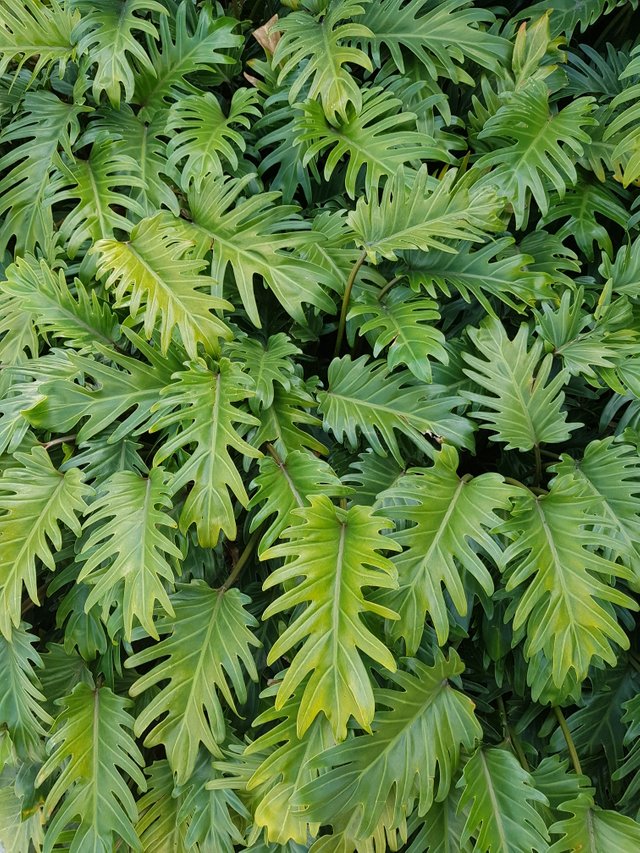 Philodendron "Xanadu"
Philodendron "Xanadu"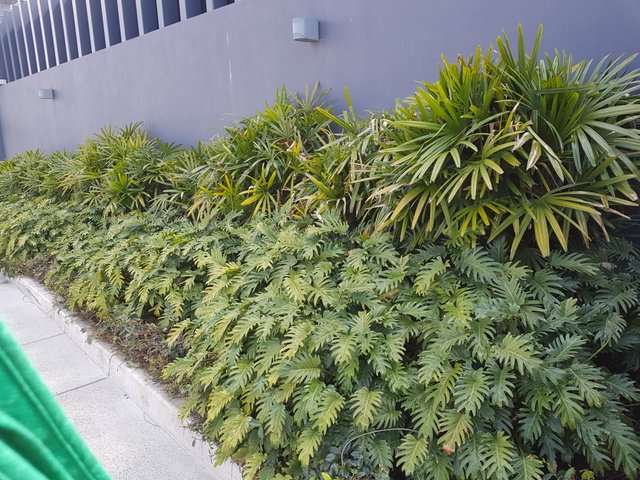 Philodendron "Xanadu" planted outdoors with Rhapis palms behind
Philodendron "Xanadu" planted outdoors with Rhapis palms behind Philodendron selloum planted outside apartments with Buxus hedge in front
Philodendron selloum planted outside apartments with Buxus hedge in front
Philodendron is a classic, and practically no-fail houseplant because it's so easy to grow. Happily, this makes it a pretty common indoor plant to find at your local garden center. The philodendron family is a pretty big one, too -- so you can find a variety of plants that grow in a range of shapes, sizes, and colors.
Many of the traditional philodendron varieties are vines perfect for growing on a totem, up a trellis, or in a hanging basket and some offer pleasing variegated foliage. These are counted as some of the most easy to grow houseplants of all time. Upright-growing philodendrons are just as easy, but typically have larger leaves.
Grow philodendrons just about anywhere. As houseplants they're that easy to keep! The plants grow best in medium or bright-light spots, but tolerate low light exceedingly well.Water philodendrons enough when the soil surface dries. They're tough enough plants they don't mind if you forget to water them now and again. Just take care not to overwater your philodendrons. They will rot if they're kept too wet.
Source: http://www.costafarms.com/plants/philodendron
Fav. comment Award ! Very nice selection of Pics, thanks.
Philodendrons make excellent houseplants as they don't mind low light conditions - their large shiny leaves soak up every bit of sunlight that filters through. This makes them great plants for shady understory spots in subtropical and tropical gardens.
They are easy-to-care-for handsome plants that will also clean the air for you. Give their leaves a wipe over with tepid soft water every now and then to keep them looking good and working efficiently.
source
Silly Sausage Award ! Very nice Pics, thanks.
Philodendron is a type of plant from the Araceae tribe, which has many species. Its name comes from the Greek language, namely from the word philo ("love") and dendron ("tree"). Because of the beauty of the shape and color of the leaves, Philodendron is preferred as an ornamental plant for a room or garden.
Philodendron is a plant that is often found in tropical rainforests like in Australia. It usually grows in damp places, in marshes, on the banks of rivers, or on roadsides. Many members propagate on other plants with the help of their roots.
Here are some other types!
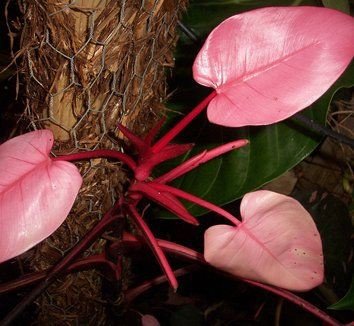 Philodendron Erubescens
Philodendron Erubescens
Philodendron Verrucosum
Philodendron Especies
Philodendron Hybrid
Fav. comment Award ! Lovely Pics .
Philodendron, (genus Philodendron), approximately 450 species of stout-stemmed, climbing herbs of tropical America, which begin life as vines and then transform into epiphytes (plants that live upon other plants).


The foliage of philodendrons is usually green but may be coppery, red, or purplish; parallel leaf veins are usually green or sometimes red or white. Shape, size, and texture of the leaves vary considerably, depending on species and maturity of the plant. The fruit is a white to orange berry. Juvenile and adult phases differ, making it almost impossible to identify different species of small plants. Because many young philodendrons are adapted to the low light levels of rainforests, they are popular potted plants for homes and offices.
Most philodendrons are great climbers, usually growing upward by wrapping their modified roots around the trunks of trees. Once they work their way to the canopy they often transform themselves into epiphytes. Plants with this life strategy are called secondary hemiepiphytes, and they include a similar group of well-known house plants that are sometimes called philodendrons, the monsteras (genus Monstera).
Unlike most plants, the seedlings of hemiepiphytes do not grow toward the Sun; instead they grow toward a tree trunk. Once there, they shift to a light-seeking strategy as they climb to the top using modified roots. Eventually the stem dies at the tree base, severing its connection with the soil.
Sources1234
Fav. comment Award ! Really nice selection of Pics.
Thank you so much for all your support sir!
@ctrl-alt-nwo,
The plant in the last photography is in my country! it's shady but I hate it! Coz my area has a lot of sneaks! Therefore, shady and bushy type meaning they got hiding places around me! For me it's a very bad dream! Anyway these plants looks good for gardening! Specially hotels! Thank you for sharing such great information about them!
Cheers~
This plane have so many uses , you can have it in many places for a lot of needs
Philodendron is a large genus of flowering plants in the Araceae family. As of September 2015, the World Checklist of Selected Plant Families accepted 489 species; other sources accept different numbers. Regardless of number of species, the genus is the second-largest member of the Araceae family.[citation needed] Taxonomically, the genus Philodendron is still poorly known, with many undescribed species. Many are grown as ornamental and indoor plants. The name derives from the Greek words philo- or "love, affection" and dendron or "tree". They are commonly called by their generic name.

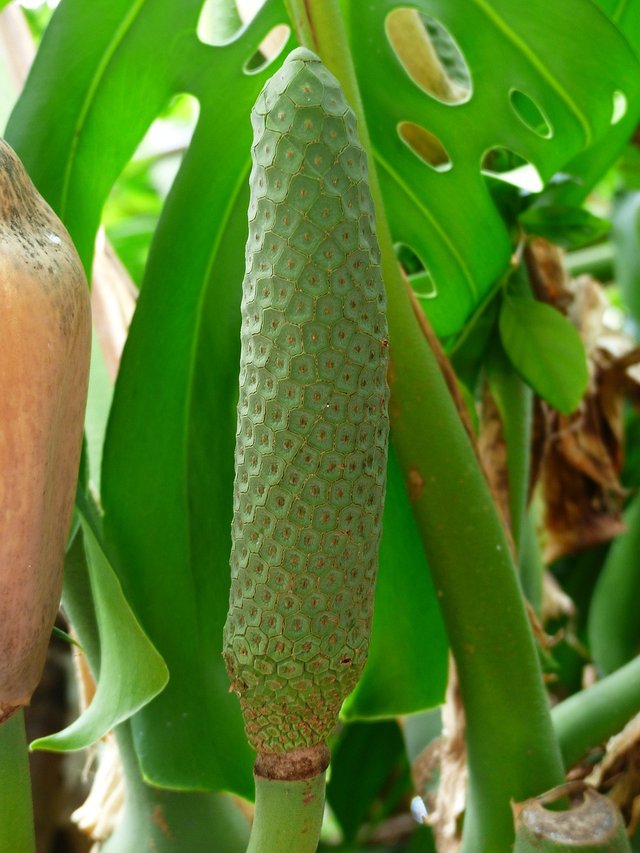
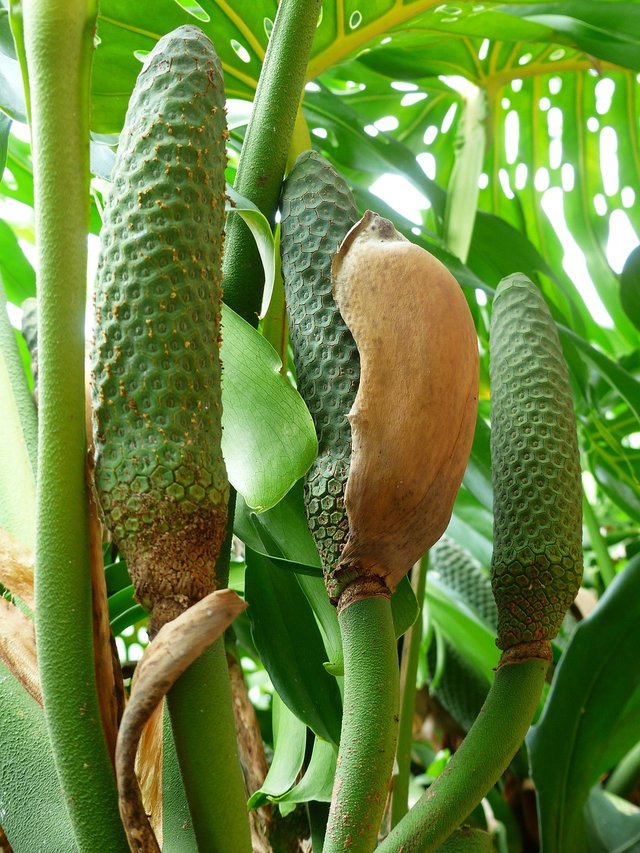
Source
Source
Source
Philodendrons can be grown outdoors in mild climates in shady spots. They thrive in moist soils with high organic matter. In milder climates, they can be grown in pots of soil or in the case of Philodendron oxycardium in containers of water. Indoor plants thrive at temperatures between 15 and 18 °C and can survive at lower light levels than other house plants. Although philodendrons can survive in dark places, they much prefer bright lights. Wiping the leaves off with water will remove any dust and insects. Plants in pots with good root systems will benefit from a weak fertilizer solution every other week.
Source
Great Pics my friend, but i think you will find that the last two photos are actually Monstera diliciosa, which it not a Philodendron. The leaves look similar, but notice the holes in the leaves, and they also produce edible fruit, like a cob of corn, but sweet, one of my favourite fruit. It's easy to confuse the two plants !
Thanks again for your informative response. I don't have much knowledge about plants but recently I have learnt about various plants and flowers from your valuable daily article. Hope I will learn much about more plants.
The philodendron is a type of flowering plant and it is a common species of plant used for indoor decoration. There are a variety of reasons why these indoor plants are used for homes and businesses, but the main reason people like them is they look great and can really add charm and appeal to indoor spaces.
Ambius interior landscaping specialists often use philodendrons when considering species of indoor plants to add to offices. Their bright white flowers make them very attractive and great for decorative purposes. Their overall ability to grow in even harsh conditions also makes them ideal for interior landscapes.
The philodendron is a type of flowering plant and is part of the Araceae family of flowering plants. They are characterized by their spadix, which is the stem encircled by the white portion which is known as the spathe. The spadix is actually a stem covered from top to bottom with tiny flowers (known as an inflorescence). Often times the philodendron is also known as being part of the arum family and sometimes referred to as aroids.
https://www.ambius.com/blog/philodendron-plant-care/
Thanks again for sharing some great photos.
Always a pleasure to share your photographs and blog on twitter to help promote #Steemit and the #Steem #Blockchain.
Have a great weekend.
Stephen
#Promo-Steem #steemtalent #JoinSteemit #Steemit
The Leafy Luxury of Philodendrons. #STEEM #steemtalent #JoinSteemit #Steemit
#gardenersworld #garden #gardening #plant #life #blog #blogger #australia #photography #photographer
https://twitter.com/StephenPKendal/status/1060861221342273537
Philodendron means "tree-loving," and most species in this genus are tree-climbing vines. Vines seek light by using trees to reach the top of what ecologists call the "canopy," where sunlight is available, unobscured by taller plants. Thus if your Philodendron is given free rein, you can expect it will grow across the room toward your halogen light.
Whether we consider a Philodendron growing indoors or one in the forest, a deeper question follows: How does this plant survive at a very low light level until it reaches the sunlight, or halogen lamp? To answer we need to understand how plants absorb light to make sugars and starchthat is, photosynthesize. Chlorophyll is the familiar pigment that gives plants their green color, but there is no free chlorophyll in the leafit is all bundled with specific proteins. The most abundant of these packages, the light-harvesting protein complex, absorbs light energy and passes it on to other complexes that begin the actual photosynthetic process. When a plant is short of light, it makes more of this light-harvesting complex; when it has plenty of light, it makes less. As a result, leaves at the ground level of a vine growing in the forest are a deeper green than leaves high up on the vine. Leaves are thus adapted to the light intensities they experience.
https://www.scientificamerican.com/article/how-can-philodendron-plan/